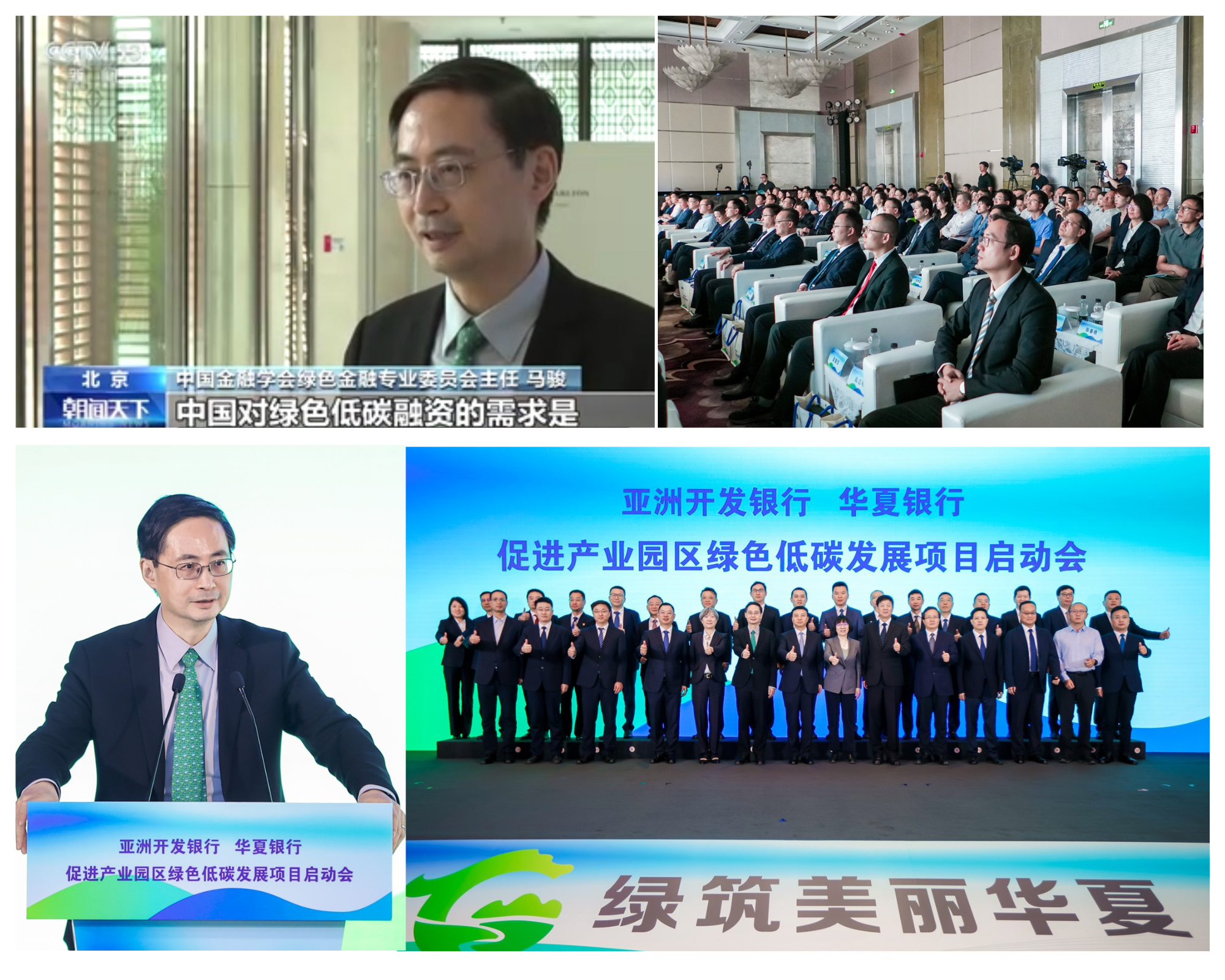
On June 10, Dr. Ma Jun, Chairman of the Capacity-building Alliance of Sustainable Investment (CASI) and Founder and President of Institute of Finance and Sustainability (IFS) attended the launch event for the Green and Low-Carbon Development of Industrial Parks project in Beijing. The event was co-hosted by the Asian Development Bank (ADB) and Huaxia Bank, marking the official rollout of a policy-supported financial initiative aimed at accelerating the transition of industrial parks in China toward zero-carbon pathways.
A major highlight of the event was the signing of MOUs between Huaxia Bank - the recipient of an ADB loan, and 12 industrial parks. These agreements will help provide much-needed financial support for a range of decarbonization projects across both national and provincial development zones.
In his keynote address, Dr. Ma emphasized the importance of green and transition finance in supporting not only the development of new net-zero industrial parks, but also in guiding the low-carbon transformation of existing ones.
The project aims to leverage a variety of financial instruments, including green loans, green bonds, blended finance, KPI-linked tools, and performance-based incentives - to channel capital toward impactful projects. These may include investments in renewable energy, energy efficiency, green transportation, and the decarbonization of industrial operations.
Industrial parks play a central role in China’s economy and environmental landscape. They account for more than 50% of the country’s industrial output and contribute roughly 30% of national carbon emissions. As such, promoting their green and low-carbon development is a crucial part of China’s broader strategy to meet its climate and sustainability goals.
In a subsequent interview with CCTV, Dr. Ma highlighted both the urgency and opportunity in scaling up green finance. He noted that China’s estimated annual demand for green finance is around 16 trillion RMB, while the current supply stands at approximately 10 trillion RMB, leaving a 6 trillion RMB shortfall.
“This means there is still significant room for green finance to grow,” Dr. Ma remarked.
.png)

